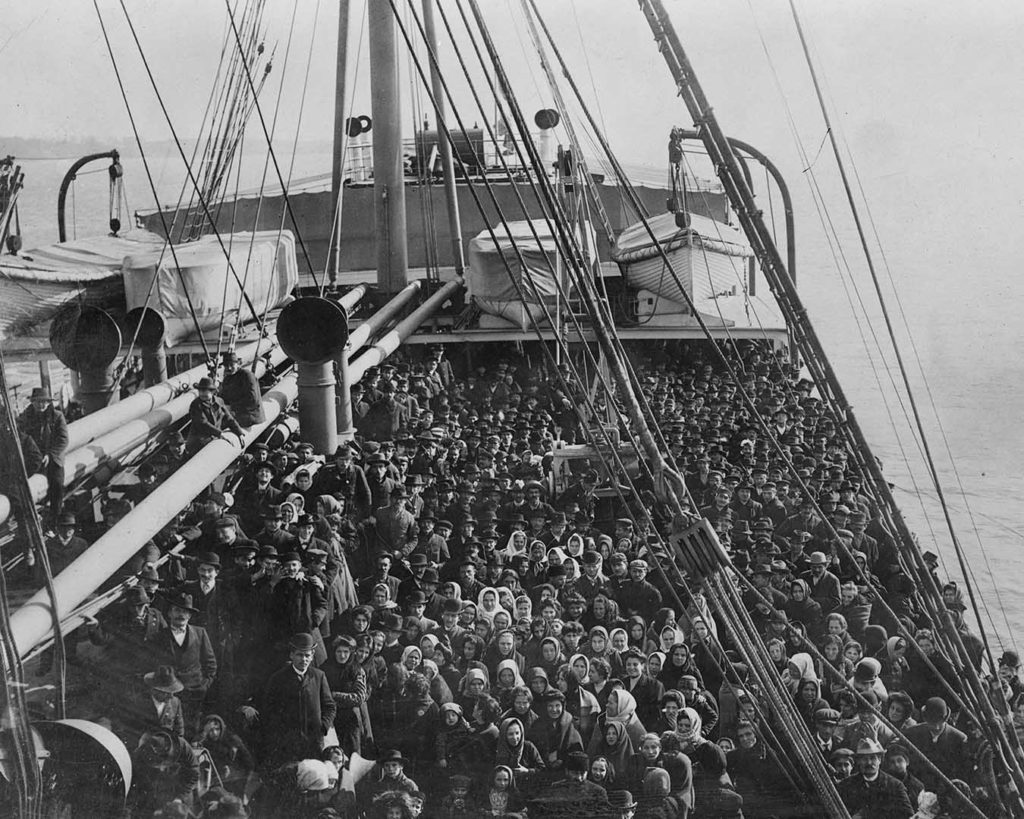Chapter 1

Introduction
What calls us to action? For Lillian Wald, a 26-year-old nurse, it is an 1893 walk through an impoverished Lower East Side to a squalid tenement and the bedside of a dying mother—abandoned by her doctor because she can’t pay his fee.
1893: Lillian Wald Gets to Work
Her plan is this: create a visiting nurse service, and treat people in their own homes. Charge little or nothing. Treat sickness—but also the social and economic conditions that cause it. It’s the birth of Henry Street Settlement.
We have seen among our neighbors many harrowing things…we are full of the trouble of our neighbors.
– Lillian Wald, 1893
A Time of New Ideas
Wald’s plan of home care for impoverished New Yorkers is innovative at a time when most trained nurses treated only well-to-do patients, either in their own homes or, increasingly, in hospitals. She may have been inspired by famed nurse Florence Nightingale (right), who says that to improve a patient’s health, their environment must be improved.
Moving to the Lower East Side
Wald (with fellow nurse Mary Brewster) moves to the Lower East Side. They offer neighbors nursing care, loans, food, job referrals, and emotional support.
Mrs. McRae, a “janitress,” lives in their building and becomes a friend. “The mere fact of living in the tenement brought undreamed-of opportunities for widening our knowledge and extending our human relationships,” writes Wald.
“Little Tommie” lives with his family in the basement, and is a frequent visitor to the nurses’ top-floor apartment. Wald believes that being a “friendly soul” is paramount to building trust with neighbors.
The Move to Henry Street
Two years later, Wald and Brewster move into a brick townhouse at 265 Henry Street, in the heart of the poverty-stricken Lower East Side. It becomes their new base of operations.
A Home & a Headquarters
The townhouse is a gift from Jacob Schiff, a wealthy banker, philanthropist, and Wald’s mentor and benefactor. Schiff, a towering figure in the American Jewish community, sees the gift as part of his religious tradition of philanthropy. The once-fashionable home he purchases for Wald was built in the 1830s, when rich merchants lived here. Day and night, Henry Street is alive with activity.
One night…I could not sleep on account of the heat…
and I leaned out of the window and looked down the street. Life was in full course. Peddlers were selling their wares. Right under my window sitting on the curb was a woman with a child at her breast. The fire escapes were crowded with sleepers. Children were lying on the sidewalks and on the steps of houses, while men and women were tugging mattresses and pillows toward the river or the parks. It was 2 o’clock in the morning.
– Lillian Wald, 1895
Wald and Brewster “settle” (live) here. They create a dispensary, meeting rooms, a bathroom for neighbors, and quarters for resident nurses. Brewster, suffering from exhaustion, soon leaves; Wald stays and builds the home nursing service.
– Journalist and University Settlement worker Ernest Poole, 1903
A Day in the Life
In July 1907, a New York Times reporter follows a Henry Street nurse on her rounds. She focuses on the “whole” person—their home, work, and family life—not just their sickness. It was an innovative approach to home nursing. In many ways, she and her Settlement coworkers were acting not just as nurses but as social workers. Learn more about a Day in the Life.
Part of a Movement
Henry Street is part of a larger “settlement house movement.” Spawned in London in 1884, the movement quickly spreads to the United States.
Run by idealistic reformers who live (settle) and work in largely poor, immigrant, urban neighborhoods, they offer social services for all ages, build community, and fight for social change.
The Leaders
Most settlement house heads are white, educated, non-immigrant, and well-off (like Lillian Wald, left, and Jane Addams of Hull-House, right). About half of U.S. leaders are female—radical in an era when most leadership roles are closed to women.
They are part of the first generation of college-educated women, and they seek meaningful work.
Rising Up
The best-known settlement is Hull-House, founded in Chicago in 1889. But there are many others in the U.S.: from six in 1890 there are 400 by 1910, hoping to make a dent in immense problems that really begged for wider, government solutions. They do have their critics. Some see settlement house workers as out-of-touch do-gooders.
[They are a] horde of professional ‘uplifters’ whose highest ambition,
as a rule, is to prate and write glibly about the ‘ghetto people’…the sooner we get rid of them the better.
– the Hebrew Standard Newspaper, January 21, 1910
Who Is an “American”?
Plus, many settlement houses see their role as helping to maintain an “American” way of life; they seek to “Americanize” immigrants by erasing any ethnic or cultural differences.
Embracing Difference
Henry Street is different. It embraces the richness of the neighborhood’s religious and cultural life, the strength of social ties, the sense of family. Immigrants, says Lillian Wald, bring in “a steady stream of new life and new blood to the nation.”